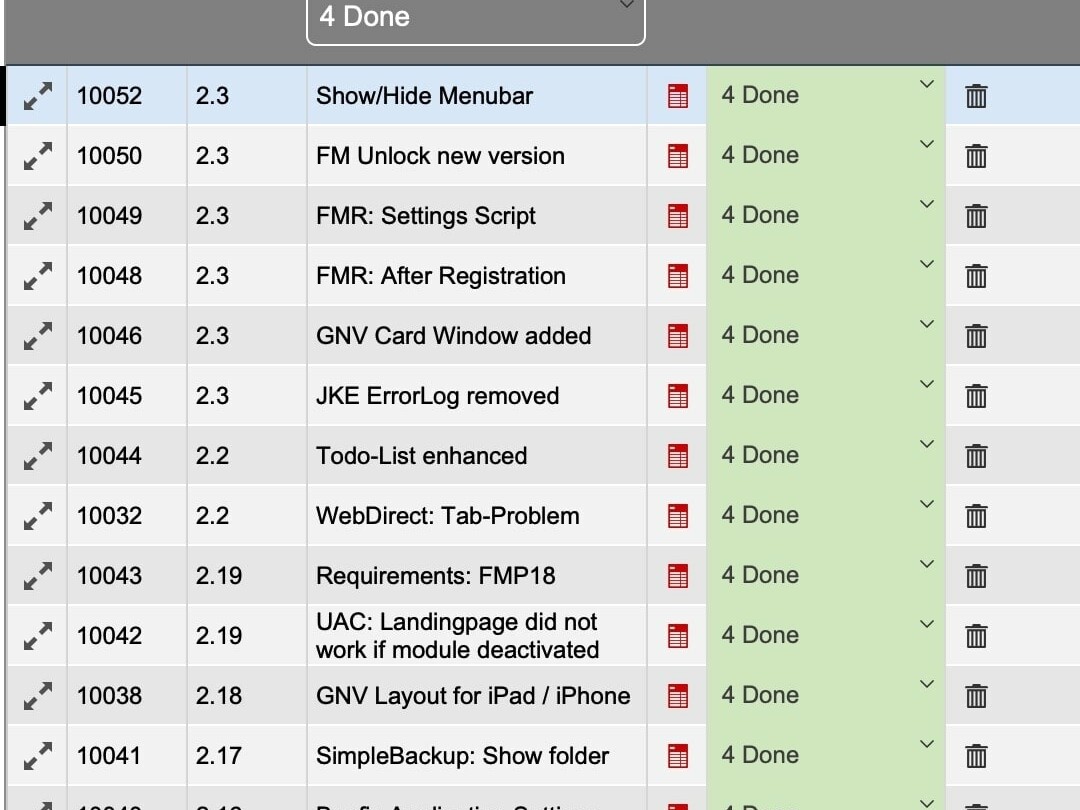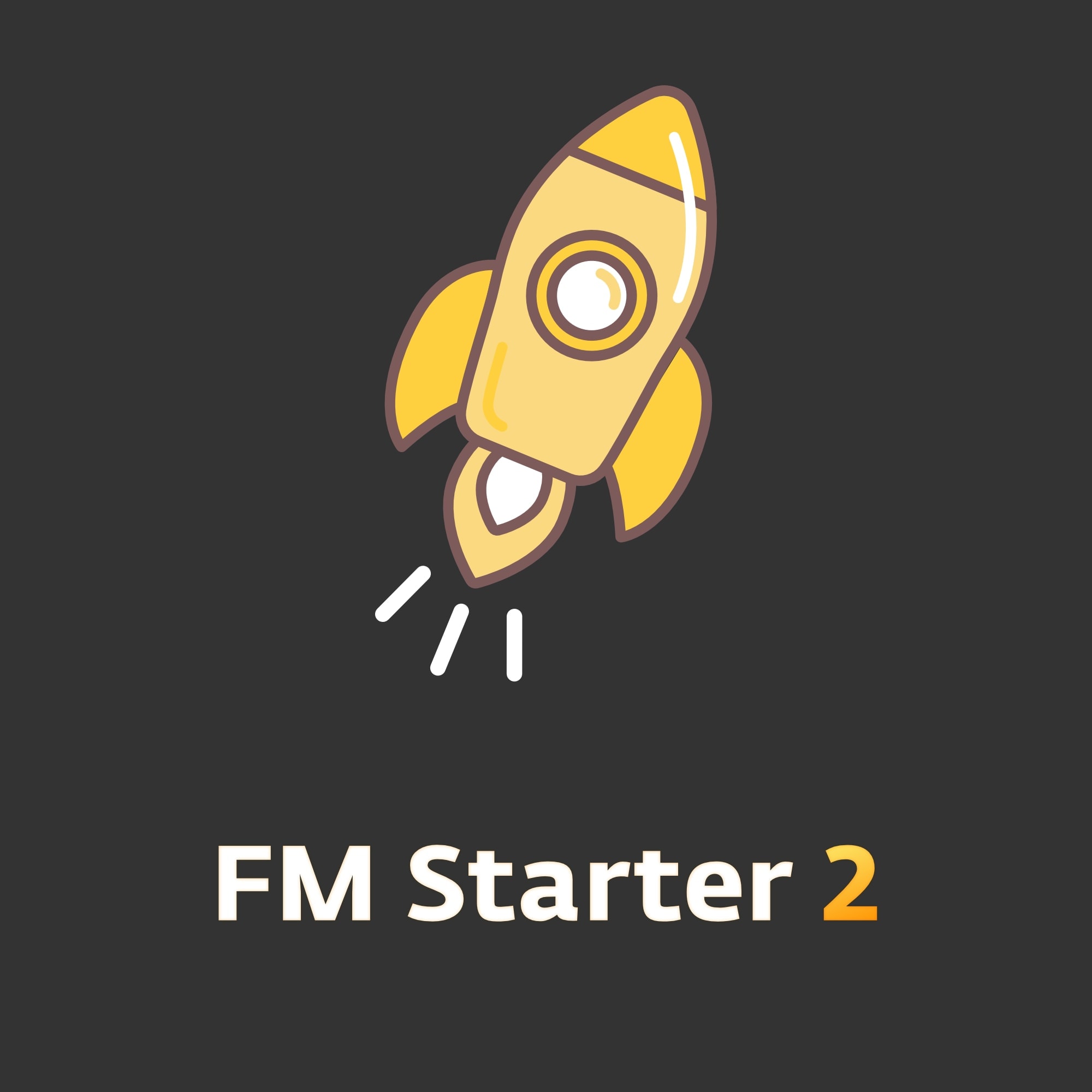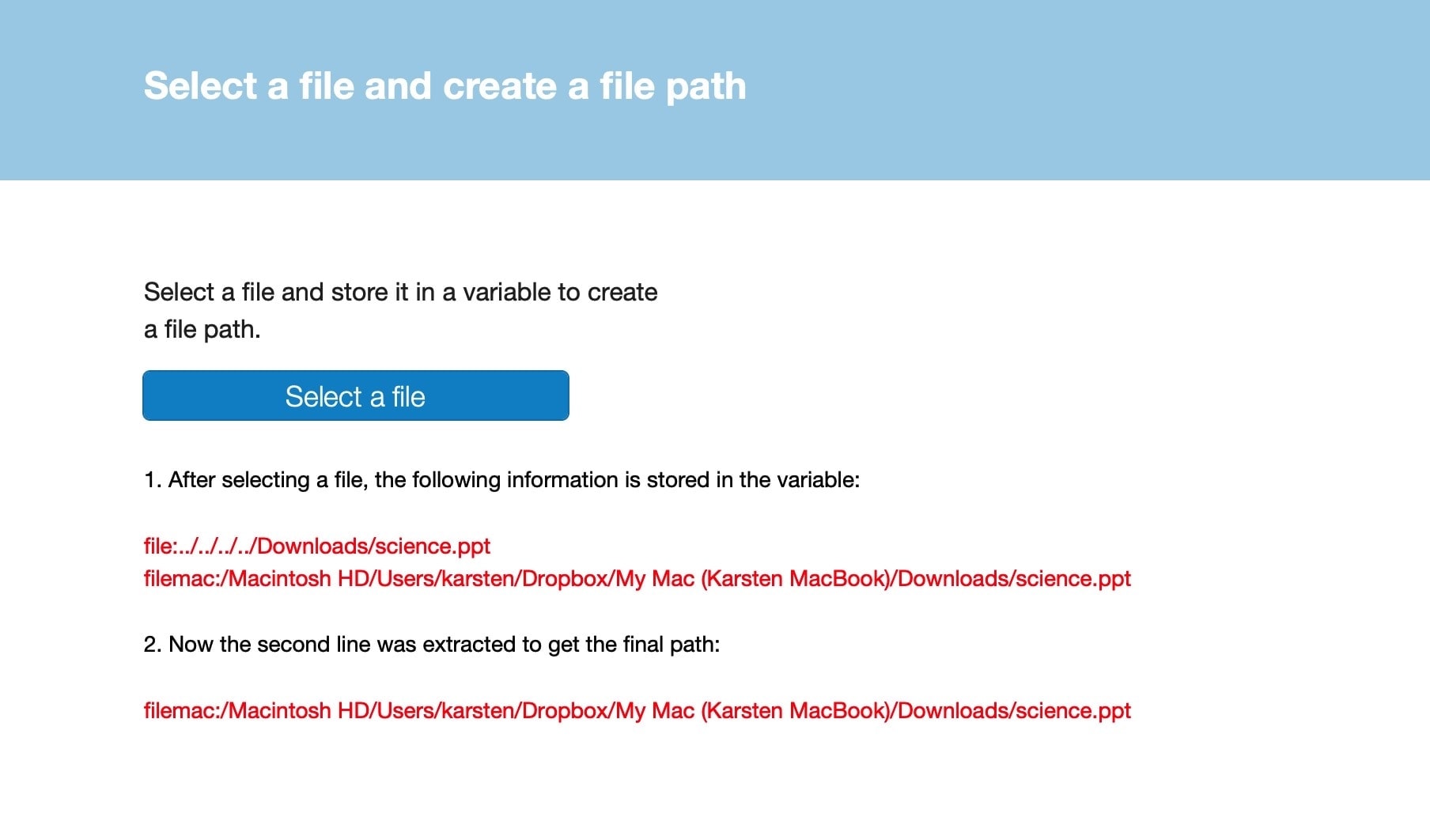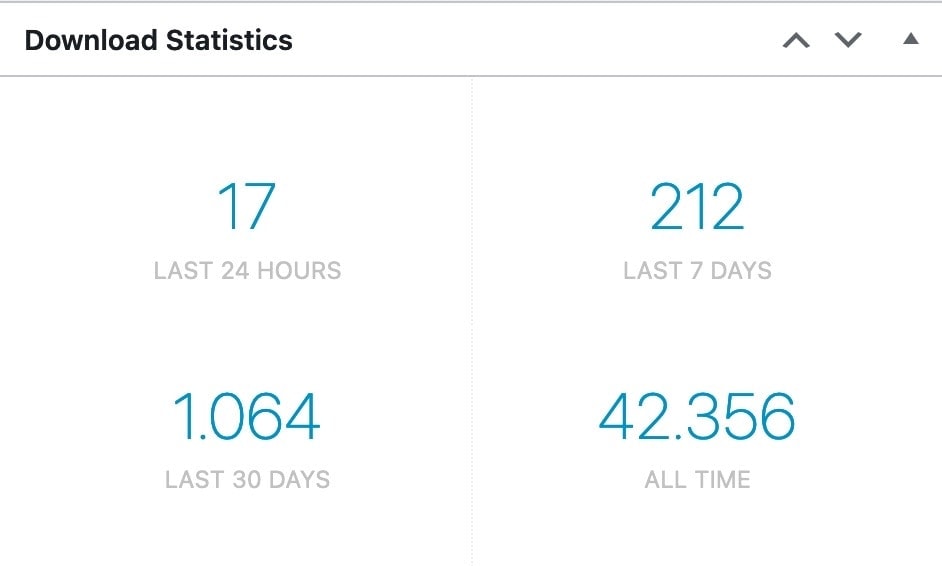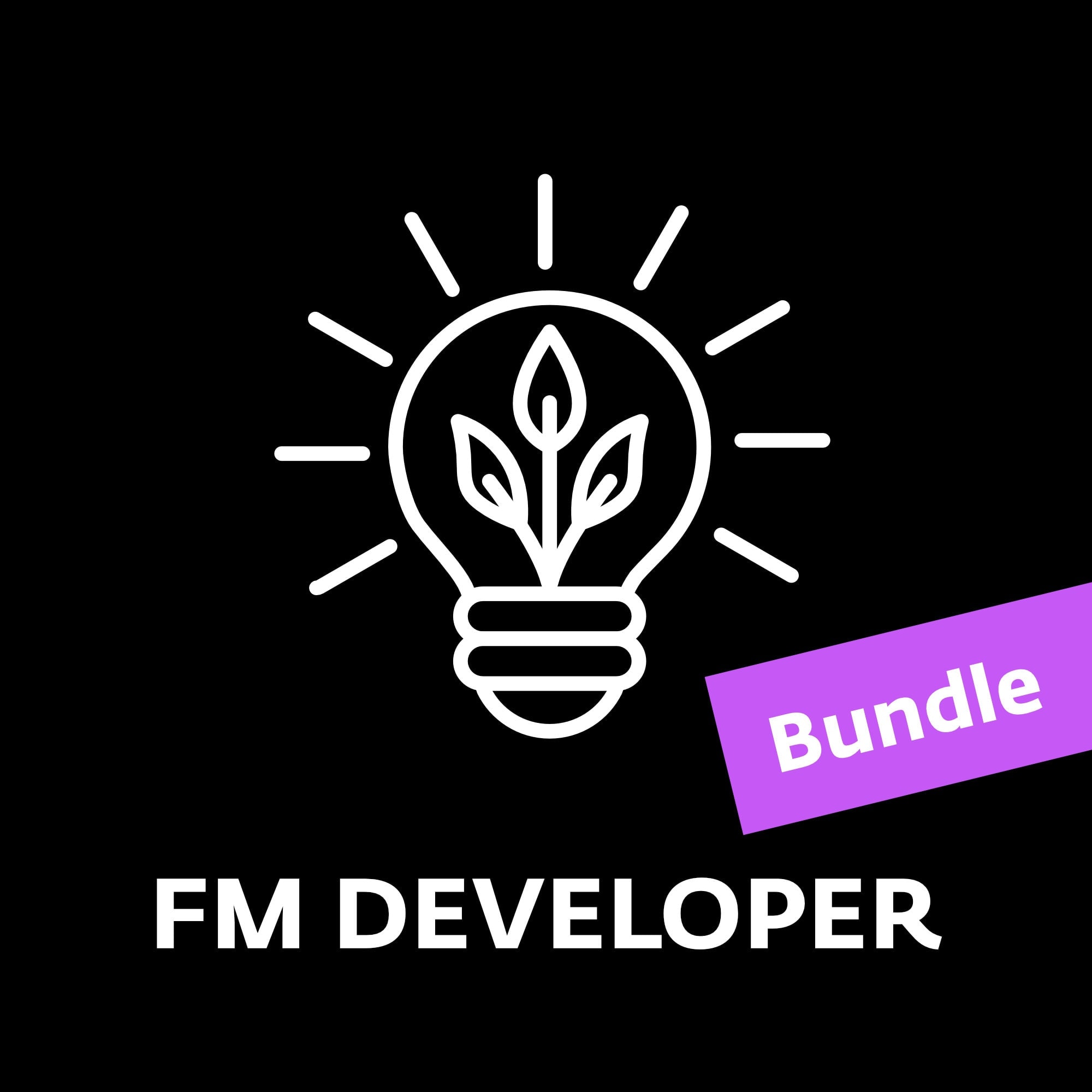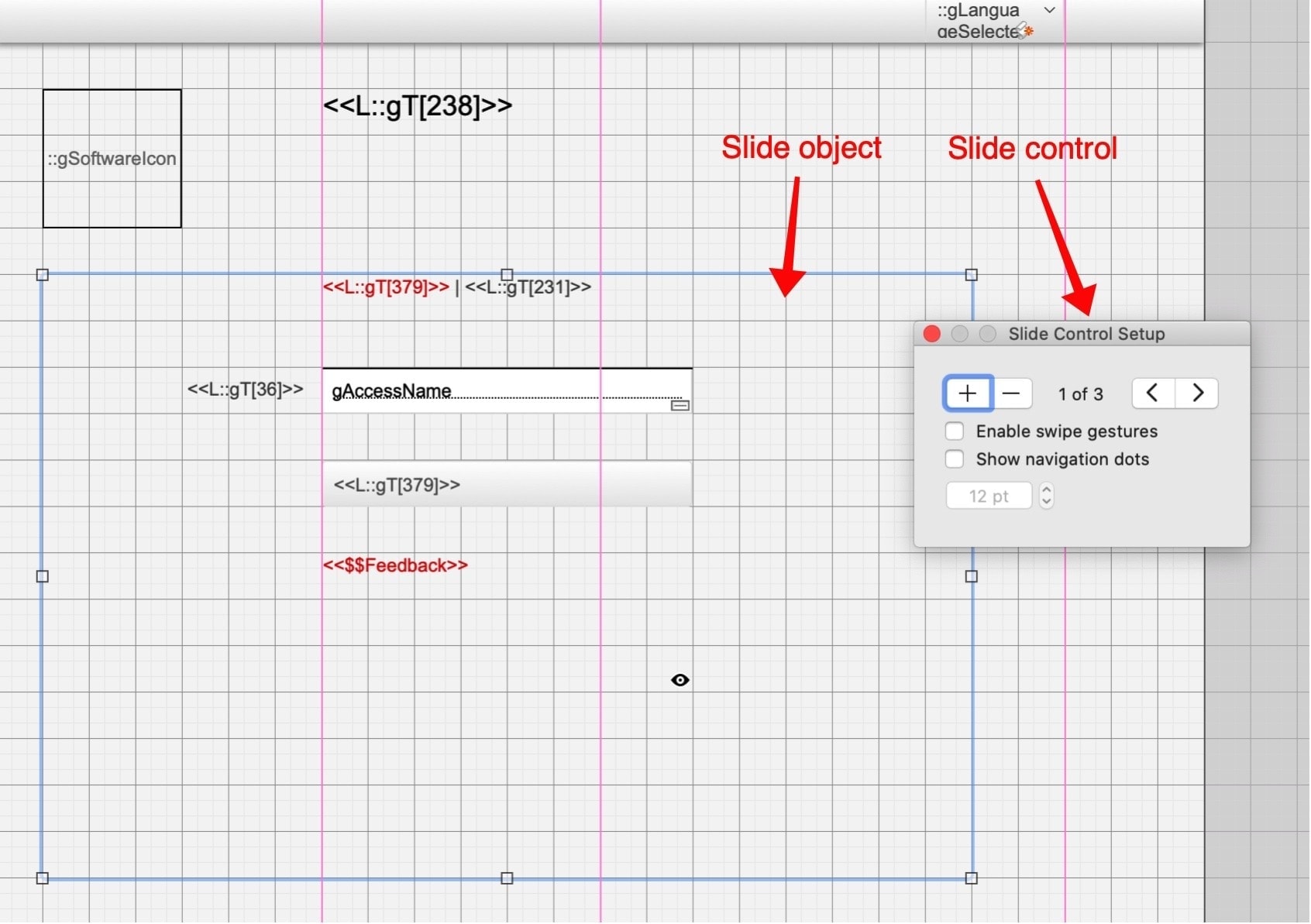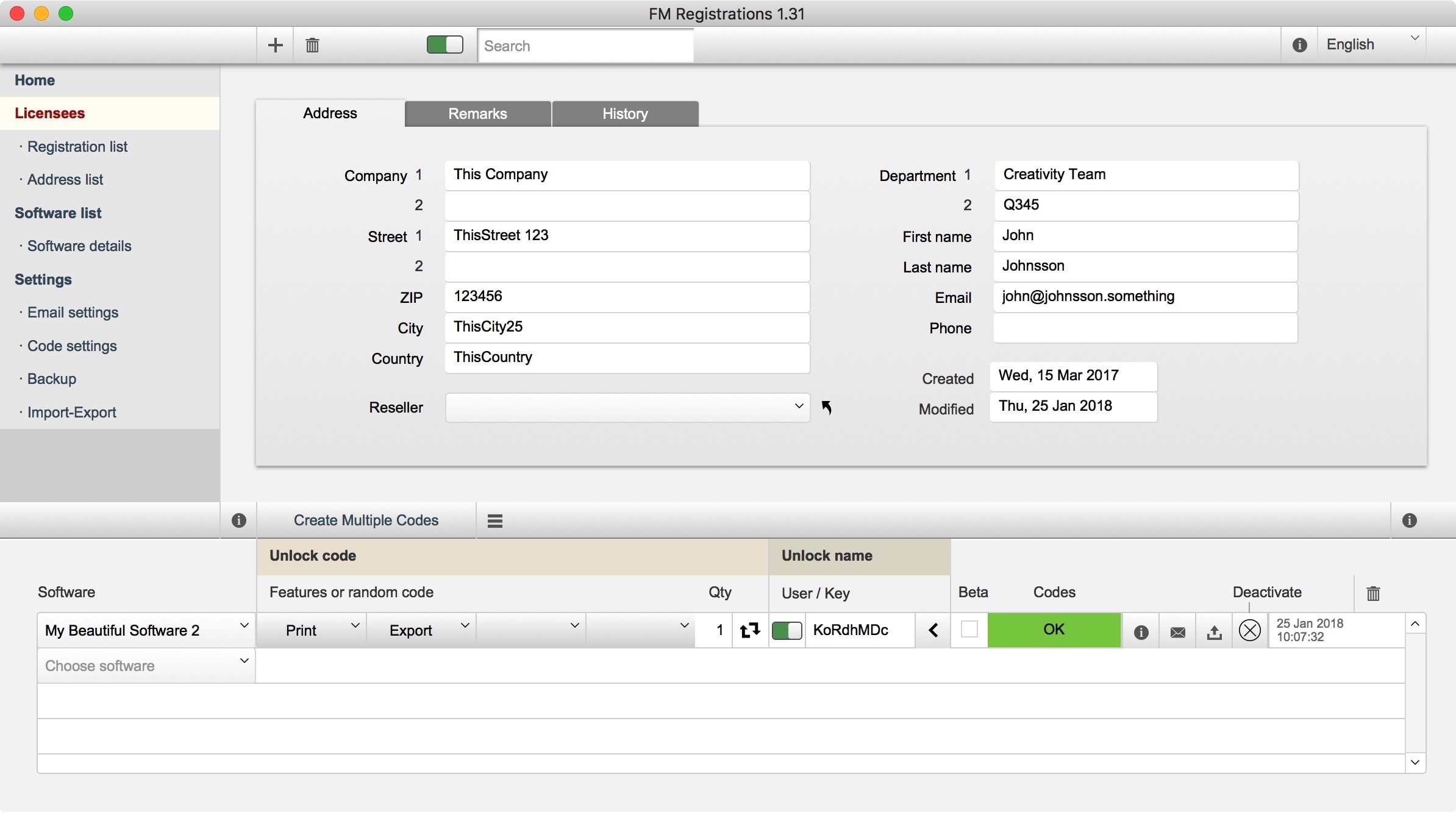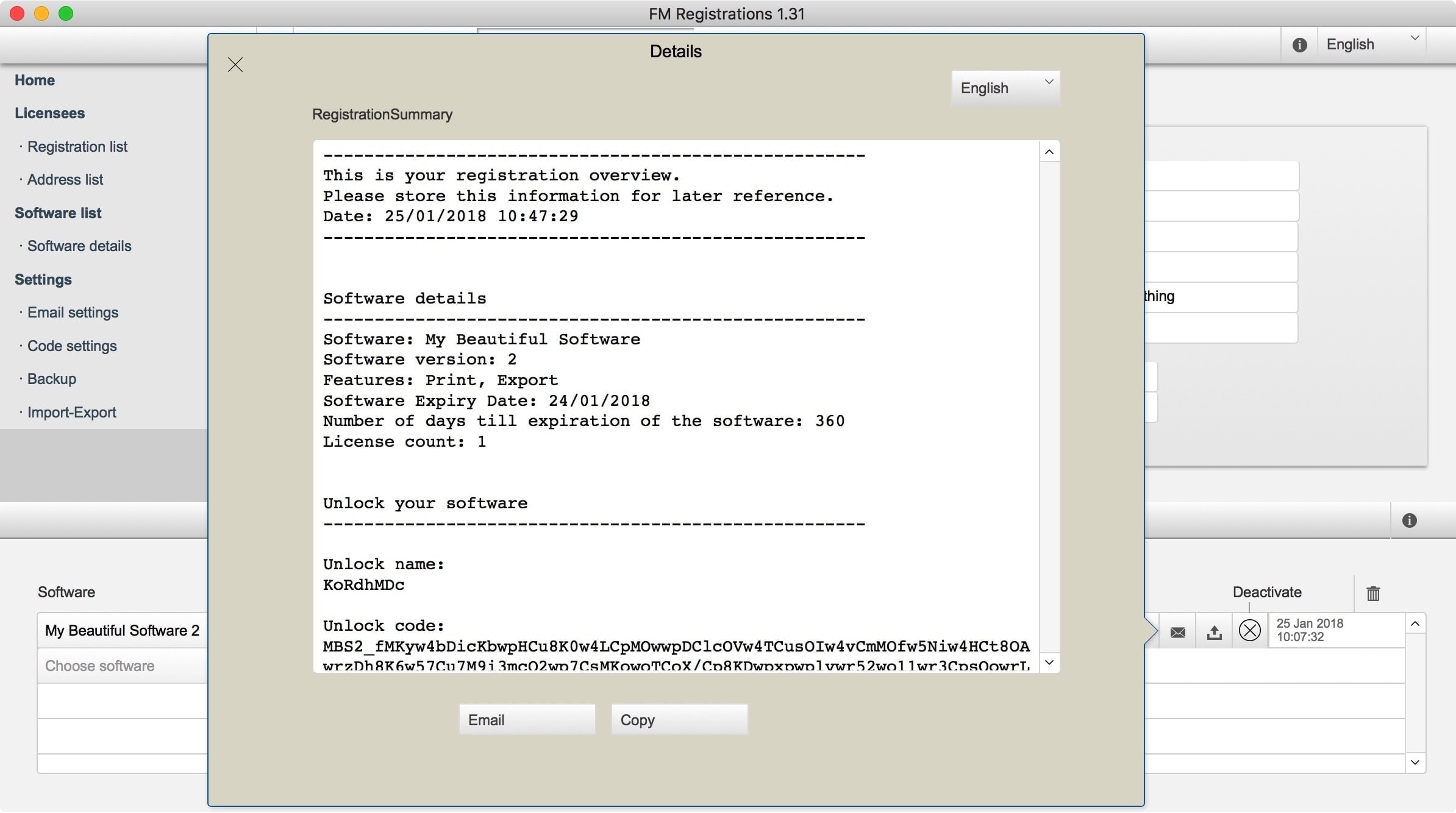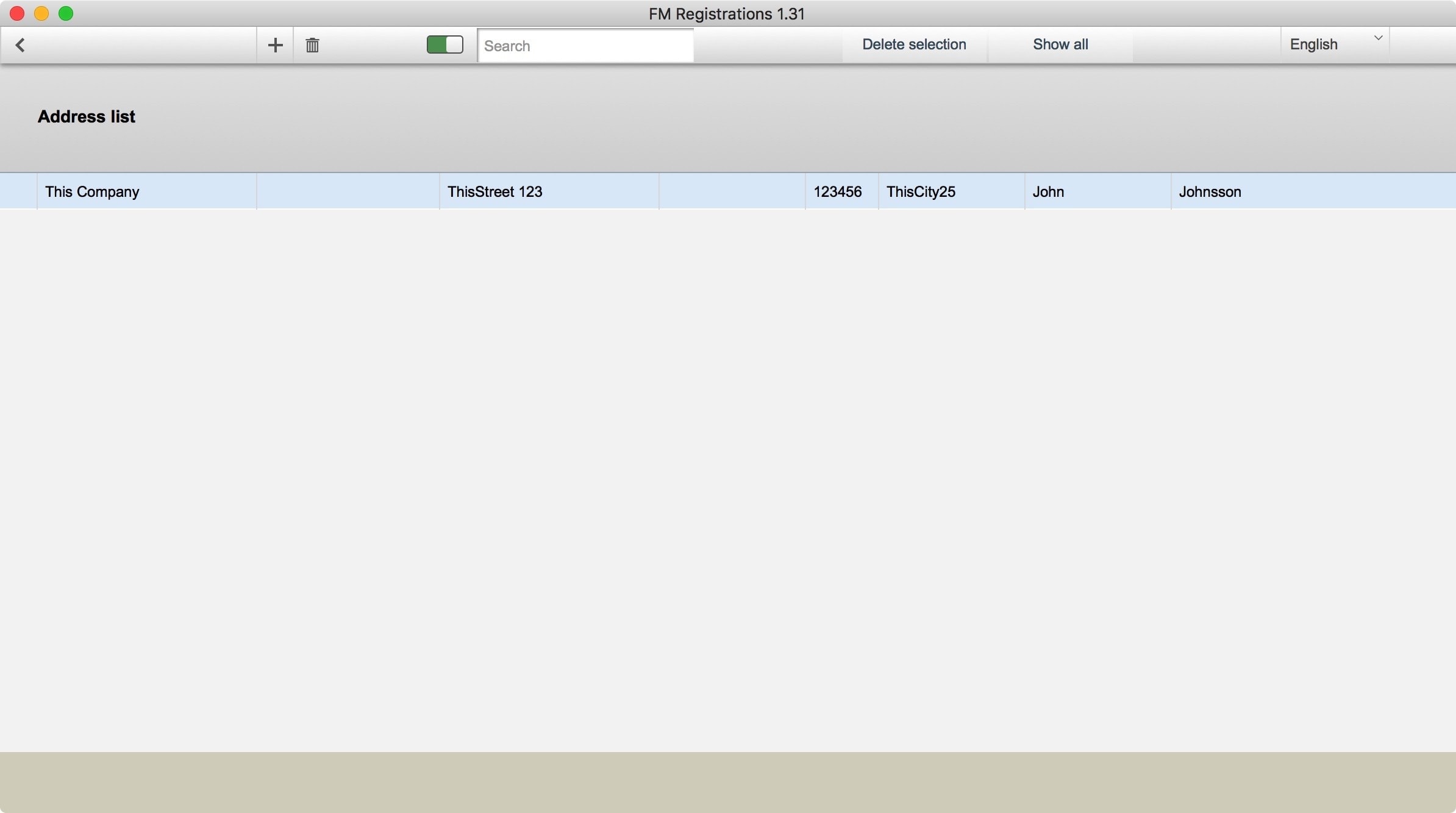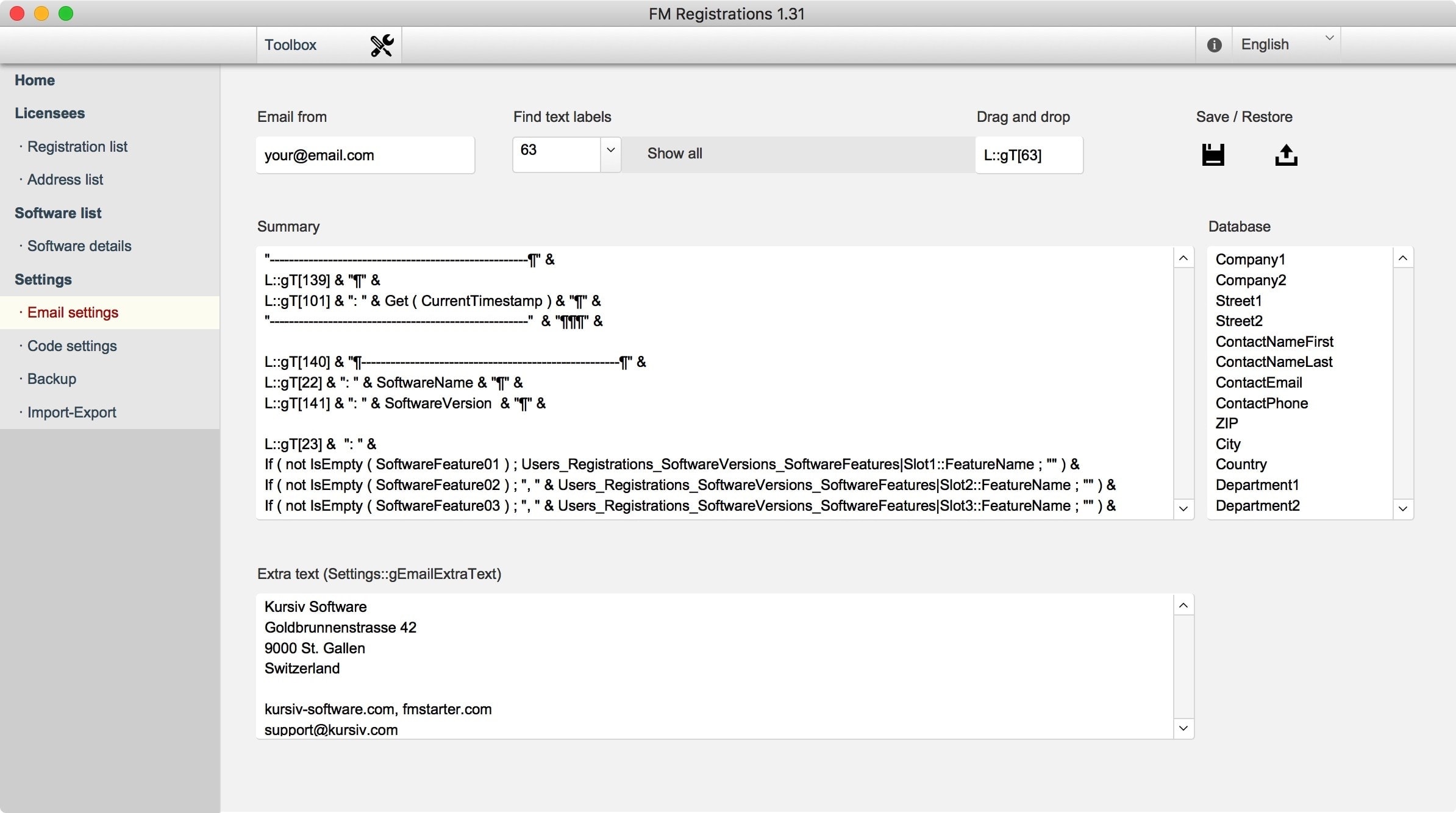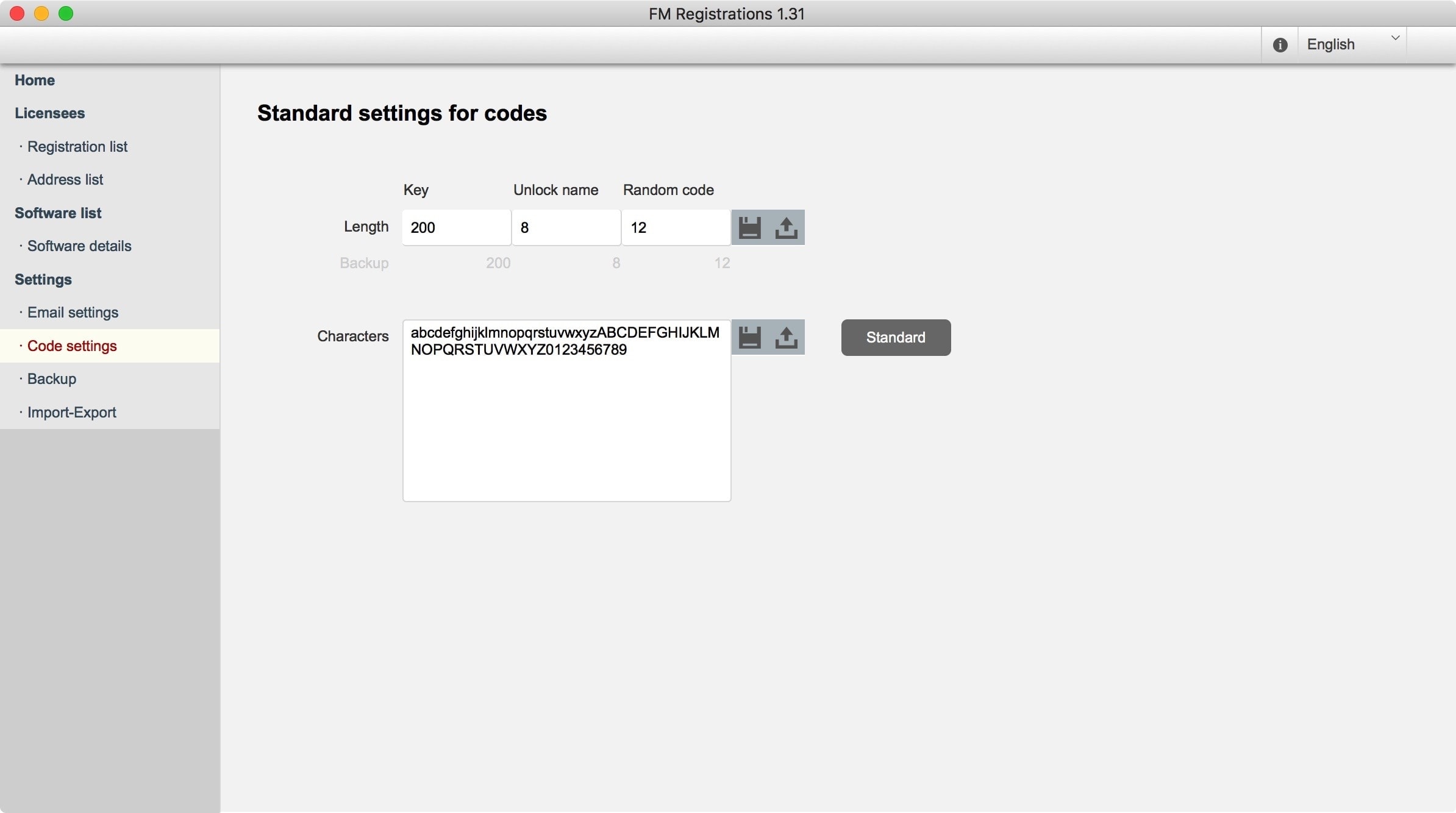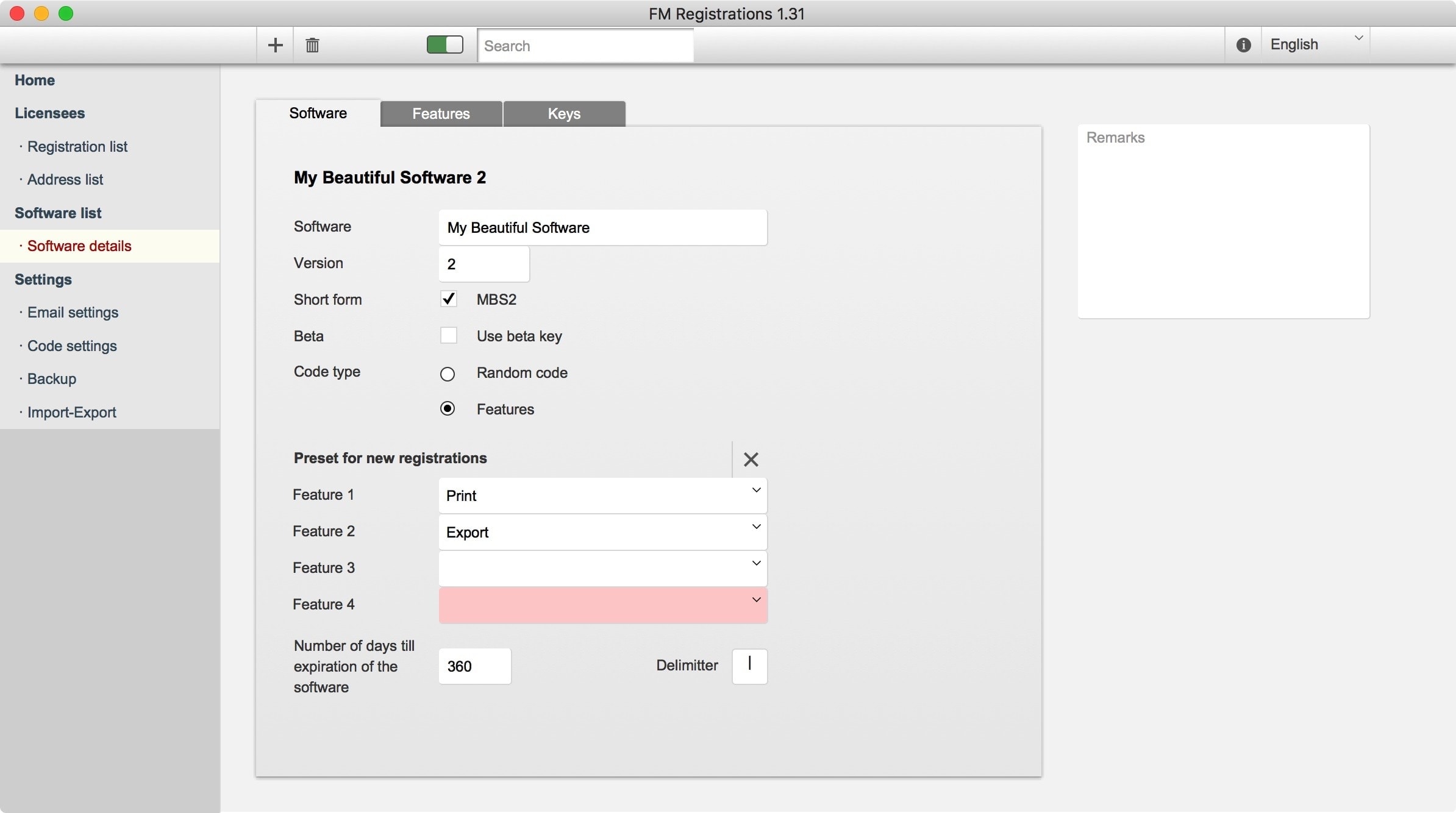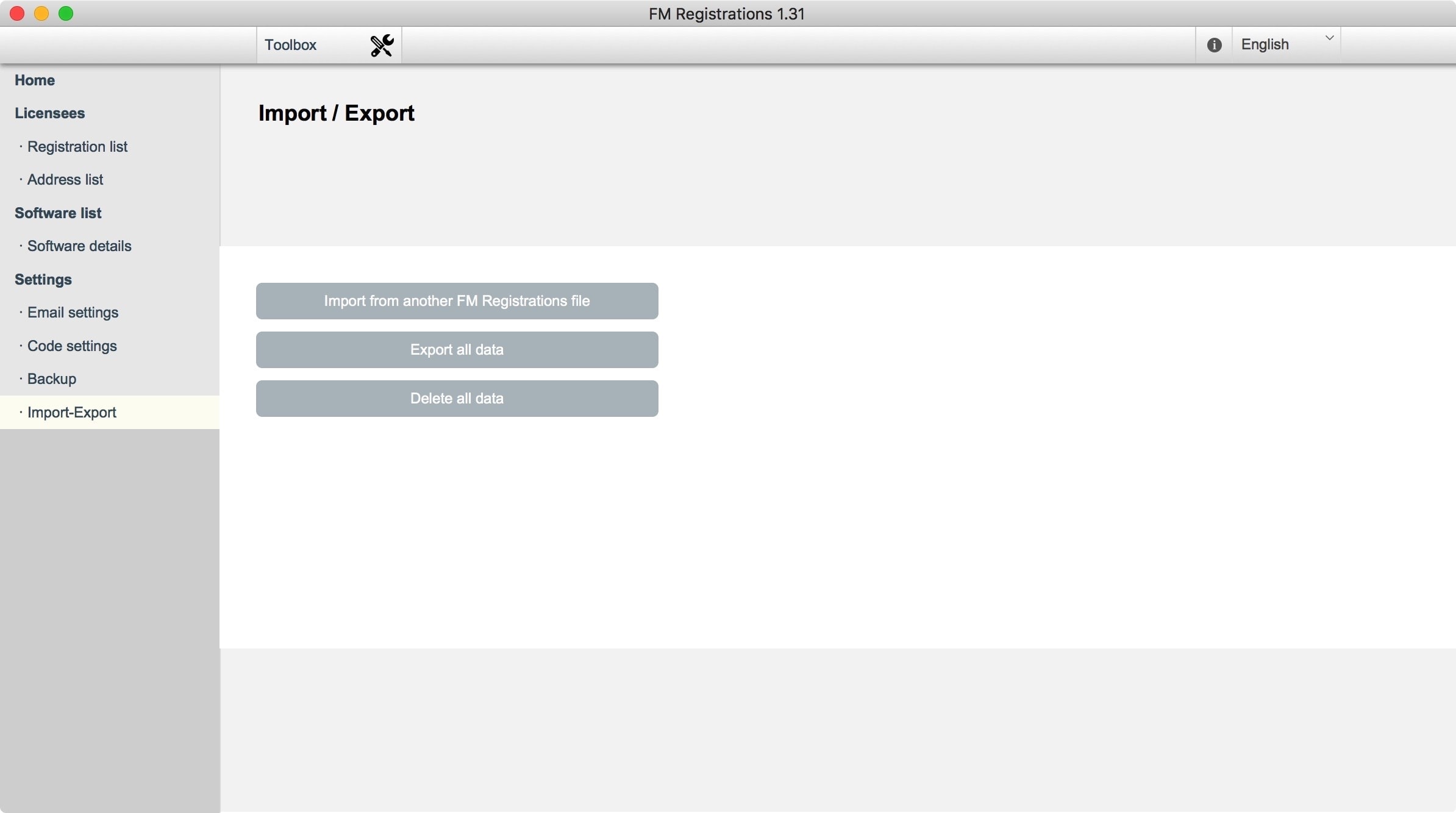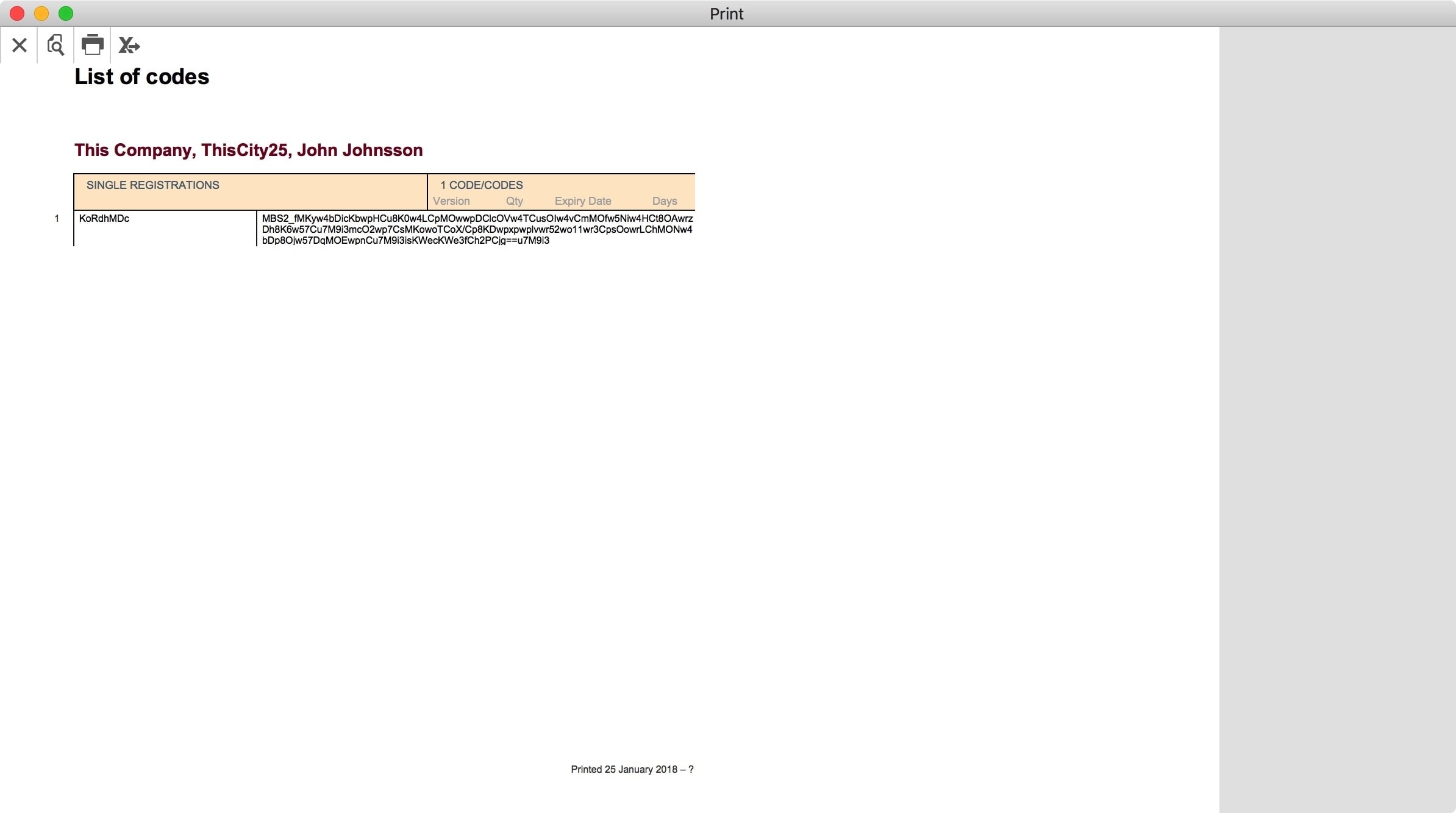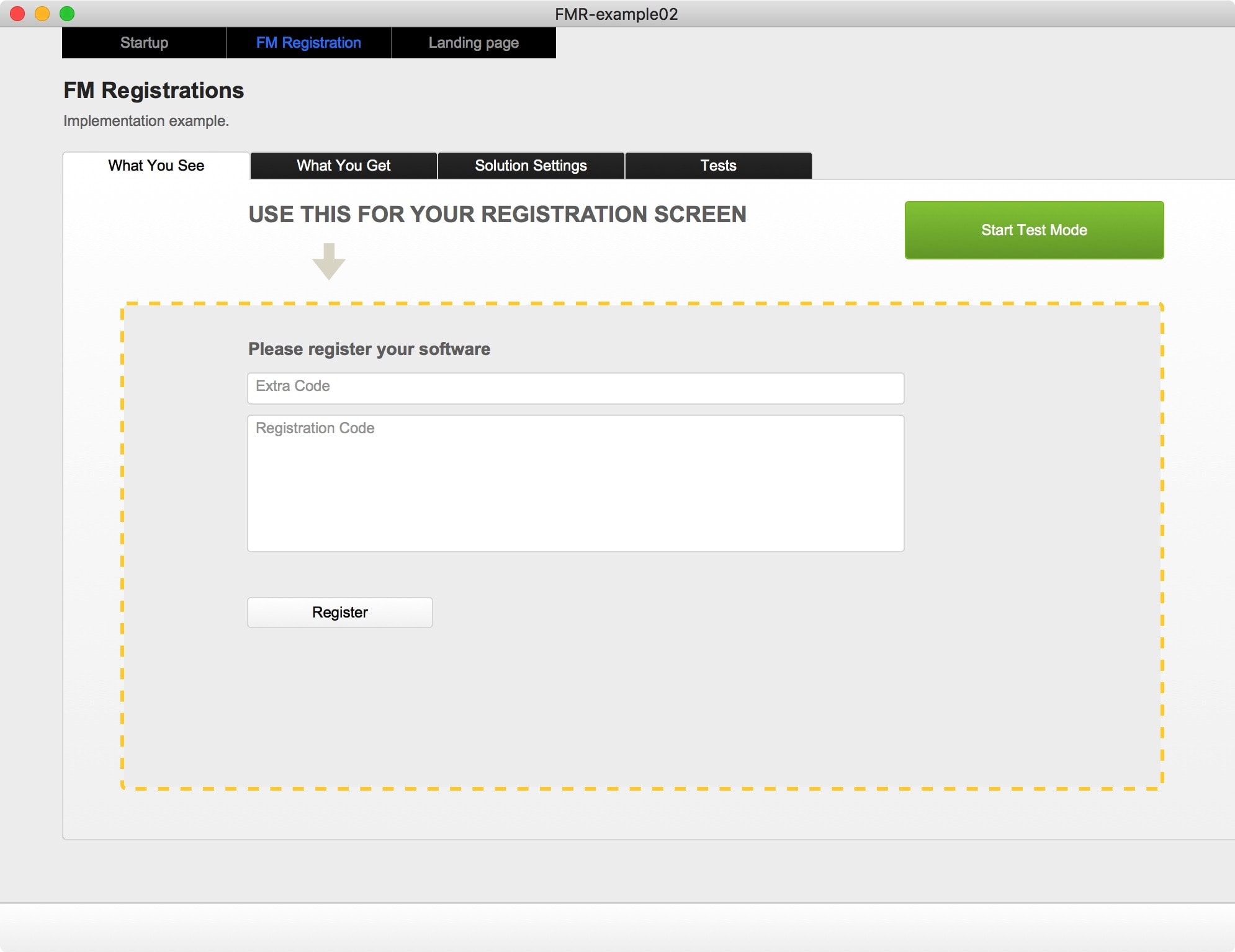Build your own business software with FileMaker and FrankCRM
Create your own business software with FileMaker and FrankCRM
The story behind the development of FrankCRM
Can you develop software yourself? With FileMaker you can. I did it that way myself. However, it all started with an open FileMaker solution that I once bought and then customized for my needs. That was the best decision I made at the beginning of my self-employment. This is the story behind the development of FrankCRM.
How I built my business with FileMaker
When I started my own business, I didn’t want to be a developer. I have distributed products and created services. I realized that my activities could not be covered by any standard software. Therefore, I was looking for a solution that was freely available and that I could customize. That’s how I ended up with FileMaker and an open FileMaker solution. She was particularly helpful to me – and later to my team.
Some of my tasks were special and were not covered by any standard software. However, because I was using an open FileMaker solution, I was able to add fields, customize scripts, and create new layouts. Those were my first steps with FileMaker and I benefited enormously from the ease of use. In parallel, I built up my business and optimized the software for it. I was new to FileMaker development, but was able to use it to boost efficiency for many business processes.
Over the years, the requirements became higher and new business areas were added. Many businesses are in this development. The original FileMaker solution reached its limits. The foundation was excellent, but for my work and with the developments in the software field, I could think of better solutions.
The development of standard solutions
The first FileMaker solutions I developed for my own company were not very professional. Over time, that changed. Certain approaches proved successful, while others did not. I learned (and continue to learn) a lot from other FileMaker developers. A solid development base and a great deal of experience were created, which made it possible to bring various standard solutions to maturity and to market and maintain them over the years.
Due to this intensive examination of FileMaker, a start file for new FileMaker projects was created. It should help to get new projects off the ground more quickly. This resulted in a product: FM Starter. In this startup file basic functions were implemented, which are needed for almost every FileMaker project. This included a navigation, multilingualism, user management and these things more. It is these “invisible things” that take a particularly long time to develop.
FM Starter is the abbreviation for professional development. Because, hand on heart, who wants to deal with the same basic requirements over and over again? The startup file combines some proven solutions as a stable starting point.
What should be the next step?
The open standard solution I always wanted to have
While FM Starter is still being further developed, the idea for a new product was also born. I noticed that many users use FM Starter as a basis for their own business software. They wanted the same thing as I once wanted myself: An open FileMaker file that comes with a good basis, but which can be customized and developed further.
I had once developed a CRM and ERP solution that had “everything” in it. It had stood the test of time because it covered everything I ever needed. The solution was also successfully sold.
Times changed, however, and with them technological opportunities and, as a consequence, my business. Not everything I had ever developed was more relevant. Now it was no longer a matter of developing new skills, but of better shaping the core of the activity. “Reduce to the max” became the watchword. This was accompanied by ideas such as modular development, the separation of functionality and parameterization, and the possibilities of FileMaker add-ons. The insight here is that new, pioneering concepts can be used to build better solutions that are easier to add to.
Slowly, the idea of an open FileMaker solution for typical business processes matured. It was to be a solution that I myself had once ardently desired. However, the software should not “be able to do everything”. Having many functions has only proven itself in daily practice to a limited extent. Due to the many changes in business processes, a simple configuration seemed much more significant. This should make you better prepared for future changes in the business process.
Good concepts are flexible and can be easily adapted. If you work with good concepts right from the start, you save a lot of time and effort in further development.
Rethinking concepts
Examples
Language
If you develop a software solution with FileMaker, you can write texts directly into the layout. You can also populate value lists with “Yes” and “No” and many other texts. But what if you need a second or even third language? Then you would have to develop a system for that and retroactively build that into an already grown software solution. Even if you only need one language, it’s far more efficient to use a language manager for text labels that can be easily expanded as needed. And value lists can be populated with numbers that are and remain language-independent, while the texts are allowed to remain separate from a separate language system. While we’re on the subject of language: Wouldn’t it make sense to be able to set the user interface language separately from a document language? Or to be able to flexibly set language preferences directly per country, customer and document?
Value added tax
Value added tax is another matter of detail. It is straightforward to hard-code the correct VAT rate into a script or calculation. In case of a change or diversification of VAT rates, or if one wants to export products without VAT at all, changes and exceptions have to be integrated. This is costly, not to mention multiple VAT rates within one invoice. Retrofitting such options later is again extremely costly. Wouldn’t it make more sense to include all options from the beginning and in an easily configurable way? About a few simple lists of values? And wouldn’t it be ingenious if default values remained adjustable per country, customer and invoice?
Expiration dates
More and more products or services are “subscribed to” or service contracts are agreed for a certain period of time. This is almost a basic requirement. Wouldn’t it be helpful if you could define a start and end date for each invoice item, and specify that you want to be reminded before the expiration date? While you’re at it, a small workflow should help you quickly email these reminder dates to customers with a bit of information. A basic workflow may not solve every requirement, but can be adapted relatively easily. In any case, it is helpful if such a reminder is sent right away in the customer’s language. This is where the language management comes into play again, which is integrated here right away.
For an open and flexible solution, the concepts that are consistently and configurably implemented and used are crucial. So, step by step, I ended up with the standard solution I always wanted.
FrankCRM as a basis
The standard FrankCRM solution provides a basis for charging customers for products or services. It is possible to work with it immediately. If you download the software in the morning, you can send your first invoices the same day.
FrankCRM was built in such a way that as many settings as possible are freely configurable via normal layouts. This simplifies the adaptation to your own needs.
“Configuring is easier than programming.”
With a full version you get full access to the file. This makes FrankCRM a perfect basis for your own further development. FrankCRM is not only a business software, but also a development base, with a proven project structure and many generic tools that can be used for further development.

Less is more
FrankCRM is limited to a few areas. This is chosen on purpose. The problem with many CRM solutions is that they seem cluttered. You have “everything,” so to speak, but those who don’t need “everything” or need to make adjustments “everywhere” face an often daunting task. Can “much” also mean “too much”?
FrankCRM is equipped with many options, but remains clear and focused. This is good for small companies that may never need more. Others, however, want to drive further development. As a startup file for new industry solutions, FrankCRM offers a versatile and proven foundation without ballast.
Less is more.
Further development can be done by the user or, if required, an external developer can be hired. What freedom in development do you have in mind?
FM Starter 2.3 released
FM Starter 2.3 released
Various minor and a few major changes
The current update for FM Starter includes bug fixes, minor improvements, and a few major changes. The aim of this update was to make FM Starter easier and clearer.
FM starter 2.30
The main changes:
- A variant with a map window was created for navigation
- For operation under Windows, the menus were explicitly switched on at startup
- The JKE Errorlog module has been removed (as announced)
- The interface for the FM Unlock module has been completely renewed
- That Manual was updated
How do I get the updates?
If you have a valid FM Starter license (purchased within the last 12 months), you can access the latest version directly from your account fmstarter.com download.
What is FM Starter?
FM Starter is a starter file for new FileMaker projects. Standard tasks such as dynamic navigation, user administration and many more things are already integrated. This makes new projects a lot faster and easier. FM Starter can be purchased as a stand-alone product or as part of the Developer Bundle on this website.
FM Developer Bundle
FM Starter 2
FrankCRM
€ 2.450,00 – € 4.900,00 excl. VATSelect any file and create a file path for FileMaker
Select any file and create a file path for FileMaker
Insert file and save in a variable. With sample file.
How do you get the path to any file?
For a long time it was not possible to select any file without using a plug-in. Today it’s very easy. To do this, select the «Insert file» script step. The result can be saved in a variable, for example. The path to the file can be extracted very easily from this variable.
Such file paths are required so that the file can be imported, for example.
The following example file shows how to do it. This file was created with Mac. Check the results and settings for any other platform.

FileSelect zeigt, wie man in FileMaker eine beliebige Datei auswählt, um den Dateipfad dann für Import oder Export nutzen zu können.
FileSelect shows how to select any file in FileMaker and then use the file path for import or export.
A central website for FileMaker developers
A central website for FileMaker developers
Simplified and focused: fmstarter.com will now continue to grow
The fmstarter.com website is being expanded. In the last few years there have been mostly free tools here. Commercial solutions were sold via kursiv-software.com. That is changing now. The website fmstarter.com will target FileMaker developers and integrate everything that is needed for this.
Vision and mission
The vision for this website is quickly told: In the future, all information and products for FileMaker developers will appear here. This becomes a bundled resource. In the past, commercial products were sold through our shop on kursiv-software.com. That already changed this year. All FileMaker products are now available at fmstarter.com.
The mission is just as simple: we want to simplify development with FileMaker. Everyone should be able to work with FileMaker with fun and success. Free sample files as well as commercial products are offered for this purpose. An online course offering is also in preparation.
FileMaker and low code
FileMaker is a low-code product. Even without programming knowledge, you can quickly build a solution that can simplify business processes. It doesn’t stop there, of course. With increasing requirements, you need better basics and more know-how. This is where Kursiv Software steps in. Our experience makes your entry into the world of FileMaker much easier. Not only that, experienced FileMaker developers also benefit from our solutions because they accelerate processes or provide a solid foundation for new projects.
FileMaker Developer Newsletter
Another innovation is the newsletter, which is now specially made for FileMaker developers only. You can subscribe to the German newsletter on the German side of this website, while the English newsletter is offered on the English side of the website.
Building for the future
Anyone who builds software builds for the future. What I do today will take me further tomorrow. That’s why it’s worth investing in FileMaker. The platform is stable, versatile and has been successful for decades. Kursiv Software wants to contribute a few things to this ecosystem. This is what this website is for.
Who else should get to know our website?
42,000 Downloads
42,000 Downloads
Amazing! By early 2021, the sample files and FileMaker modules on this website had been downloaded over 42,000 times. This shows that FileMaker developers around the world are looking for good solutions, getting started guides, starter files and examples.
FM Starter will be enhanced
The second round is now underway. The counter has been reset. The website will be revised gradually. Some older files will disappear, but new posts will appear more regularly. We are also preparing something that will help FileMaker developers in particular. However, nothing is revealed about this here yet.
Wait and see!
FM Developer Bundle for FileMaker developers
FM Developer Bundle for FileMaker developers
A FileMaker developer deals with a variety of topics. It’s not just about technology, but also about workflows, design and the like. These basic functions and skills are what it’s all about. The FM Developer Bundle combines various basic functions and a reliable shortcut to many other skills in one affordable bundle. This makes it much easier to launch FileMaker projects and you can immediately start working on the actual tasks of your new software.
All beginnings are easy
One of the great advantages of FileMaker is that it is very easy to get started. FileMaker is a low code development platform and as such for many people the perfect tool for custom development. I myself started out that way and am convinced of the advantages of FileMaker. It’s really easy to start new projects and get useful results in no time.
But as soon as you start developing new projects seriously, questions come up: How do I solve this? How do I solve that? Wouldn’t it make sense to have something like a starter solution which already covers recurring tasks? How you proceed with a project is not just a matter of taste. Every decision has consequences for further development. Experienced developers can judge what works and what doesn’t. You could also say: You must have made a number of mistakes to see more clearly. This is the experience that helps to better track down new projects.
So the beginning of the development is easy. But what happens next? The FM Developer Bundle is the shortcut to a proven development structure.
The next stage of development
Kursiv Software develops products for FileMaker developers. These are now available as a bundle. The FM Developer Bundle combines basic solutions for different tasks. With it, new projects can be launched much faster. The following products are included in the bundle:
- FM Starter – the starter file for new FileMaker projects
- FM Registrations – create license codes for standard applications based on FileMaker
- FM Designer – 10 themes for an easy and fast design.
After offering individual products, there is now the accumulated experience as a low-cost product bundle. Never was it easier to get started. While the individual products are carefully maintained and further developed, the FM Developer Bundle includes all the advantages. The philosophy behind it can be described as follows: “Solutions that are as simple as possible but work well, and which everyone can adapt and further develop themselves”.
The product bundle will also be the container in which we will provide further development tools in the future, which will not be available as a separate product.
Further information about the “FM Developer Bundle” can be found on the website kursiv-software.com.
FileMaker 19 and add-ons
FileMaker 19 and add-ons
Will the new add-ons in FileMaker 19 replace the concept of FileMaker modules?
FileMaker 19 has just been released and among the many exciting new features there are so-called add-ons. You can now save all settings, objects, tables, relations, scripts from a FileMaker layout as add-ons. Thus stored “FileMaker parts” can be integrated as an add-on in new FileMaker files. They are parts, which can be integrated into layouts and files by simple drag and drop.
These new add-ons are promising approaches, allowing you to quickly and easily save functions or small applications separately and integrate them into other files easily. In the near future, many add-ons are expected to be made by Claris and external developers who will then easily find their way into the FileMaker community as ready-to-use building blocks.
Does this development mean the end of the FileMaker module concept? In practice, I think that will be the case. However, the concept of FileMaker Modules also provides insight into a very tidy and clear way of programming. FileMaker developers will continue to benefit from the concept of FileMaker Modules.
The innovations in FileMaker are promising and groundbreaking for working with FileMaker. We live in exciting times.
New login procedure for FM Starter 2
New login procedure for FM Starter 2
New in FM Starter 2.08
Kursiv just enhanced the user management solution as integrated with FM Starter 2. Accounts with expiring passwords are now supported directly. The login procedure has been enhanced.
Two-phase login procedure
The most prominent enhancement in this release is a two-phase login procedure. When landing on the login page, the user enters the user name (or: email) first. It is then verified if there is a user with this identifier. Next the password field is presented, just as in many other websites and apps. The password is checked upon as well and the final login is done, access is granted, settings are read and the user is forwarded to the proper landing page of the solution. This is all done by the module “UAC UserAccounts”, which is part of FM Starter. The module has been upgraded for FM Starter 2.08.
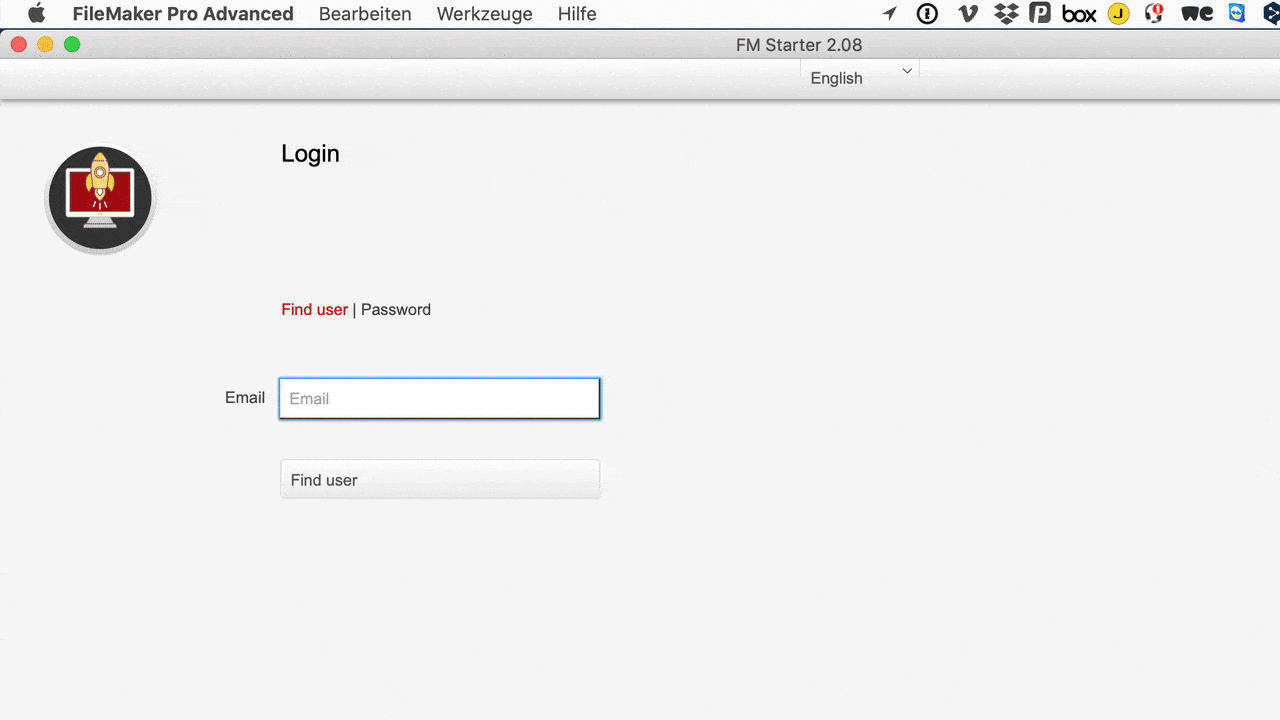
Expiring account passwords
Expiring passwords are now supported by the module. User must choose a new password at their next sign-in. To enable this feature, some modifications and enhancements had to be made to the login procedure.
Until now the data from the user table had been used. Both user name and password were checked against the entries in the user table. This part needed to be enhanced.
By including the option of expiring passwords, we also improved overall security and privacy for data. When a user signs in and defines a new password, this new password is not saved back into the user table. Only the user knows his password and FileMaker manages the account details internally. User passwords are now 100% private.
By improving the security this way, the combination of a user name + user password could no longer be searched for in the user table. The module UAC UserAccounts had to be upgraded.

New login page
The login page has been completely revamped and now supports a multi-phased login procedure. To implement this functionality on a single page, a slide object has been used with 3 slides:
- Email/User name
- Password + Login
- New password + proceed to 2.
When verifying if the email (user name) is available as an active account in the system, it also checks on the type of account to prepare the proper login scenario. This is something the user does not see, and which is coming from the UAC UserAccounts module. When the settings of the account reveal an expiring password, the user has to create a new password.
A transparent slide object is used to show all these options on a single page. The module redirects the user to the proper slide of the object.
Are there additional adjustments?
The basics of this upgrade are simple: A single field has been added to one of the tables, the content of two scripts must be replaced and the login page has changes as mentioned above.
If you want to upgrade an older solution with these enhancements, please check the ToDo-window in FM Starter 2.08 where all the changes are listed.
The next video shows the enhancements.
FM Registrations 1.31
FM Registrations 1.31
FM Registrations 1.31 was released today. The free update has some improvements and bug fixes and comes with a revised example file for integration. The update is free for all registered users who purchase the product directly from their order kursiv-software.com can download.
Unlock codes for your own FileMaker solutions
FM Registrations creates encrypted registration codes for your own FileMaker solutions. With FM Registrations you create software profiles, register customers and generate unique registration codes with which your customers can activate your software. If desired, FM Registrations transports many parameters in encrypted form, such as an expiry date, the number of users of the software or other settings. These are then decrypted again by the end user during registration and are available as parameters in your solution. You can use it to set expiry dates, renew, upgrade to multi-user solutions or even activate new function groups – all using a licensing code directly in FileMaker.
Additional Information:
License key for FileMaker solutions
License key for FileMaker solutions
How do you create licenses for your own Filemaker projects? This task is taken over by the new FM Registrations. FM Registrations creates unique and encrypted license codes with which your customers can activate your Filemaker solutions quickly and easily.
Multiple licenses for standard solutions
The typical application for FM registrations concerns standard solutions that you want to sell multiple times. For example, if you have brought an address management system, a CRM solution or any other Filemaker project to market maturity, then it is then a matter of simple licensing and activation for several customers. You can publish a test version with limited functionality on the Internet, which can be activated with a license code. After purchasing a license, you provide the customer with an activation code.
The option of «licensing» software almost always includes a registration of the licensee and a definition of what exactly should be activated. For example, the following scenarios are conceivable:
- Protection of your own software
- Activation of a full version
- Activation of modules or functions
- Activation of an update
- Activation of a new expiry date
- Activation of further users
- etc.
Registration, activation and configuration
FM Registrations allows several things at the same time: The application has an integrated address database for licensees, it allows the activation of a Filemaker solution and also allows the configuration of your software with the help of information from the license key.
All tasks are well documented and can be easily integrated into your own solutions using the example file.








